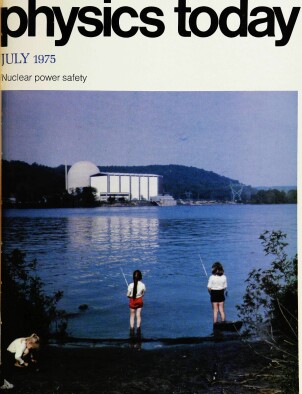JUL 01, 1975
New areas of interest may be opening for ultrashort, or picosecond duration, laser pulses. These pulses have already been used for many years in research ranging from molecular lifetime studies to nonlinear optics (see PHYSICS TODAY, July 1971, page 19). Recent applications to biophysics, condensed matter and plasma physics are reviewed in the article that begins on page 30 of this issue. One new area, recently reported by David H. Auston of Bell Labs,1 is the application of these optical pulses to electronic switching functions; they can switch a signal in about 10 picoseconds, one or two orders of magnitude faster than semiconductor junction devices. A second area is the development of ultrafast pulses from the highly efficient carbon dioxide laser, thus extending the ultrafast pulses from the visible and near infrared, where they are currently available, toward the far infrared. Most recently at the Conference on Laser Engineering and Applications in Washington, DC from 28–30 May, one group announced a technique for fast optical switching of pulses from a carbon‐dioxide laser.
This article is only available in PDF format
© 1975 American Institute of Physics




